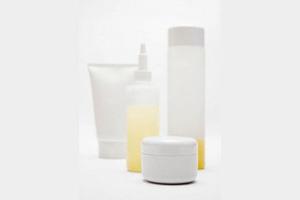SLES and SLS are used to clean cars, floors etc. because of their strong cleaning effect. How did they end up in our toothpaste, dish detergent, soap and shampoo? Because it is cheap! No wonder there are so many people suffering from cancer nowadays. Look what we absorb into our body every day!
--------------------------------------------------------------------------
Both Sodium Laureth Sulfate (SLES) and its close relative Sodium Lauryl Sulfate (SLS) 十二烷基聚氧乙醚硫酸鈉 are commonly used in many soaps, shampoos, detergents, toothpastes and other products that we expect to "foam up". Both chemicals are very effective foaming agents, chemically known as surfactants.
Unfortunately,
both sodium laureth sulfate and its cousin are also very dangerous,
highly irritating chemicals. Far from giving "healthy shining hair" and
"beautiful skin", soaps and shampoos containing sodium laureth sulfate
can lead to direct damage to the hair follicle, skin damage, permanent
eye damage in children and even liver toxicity.
Although
sodium laureth sulfate is somewhat less irritating than SLS, it cannot
be metabolised by the liver and its effects are therefore much
longer-lasting. This not only means it stays in the body tissues for
longer, but much more precious energy is used getting rid of it.
A report published
in the Journal of The American College of Toxicology in 1983 showed
that concentrations of SLS as low as 0.5% could cause irritation and
concentrations of 10-30% caused skin corrosion and severe irritation. National Institutes of Health "Household Products Directory" of
chemical ingredients lists over 80 products that contain SLS and SLES.
Some soaps have concentrations of up to 30%, which the ACT report called
"highly irritating and dangerous".
Shampoos
are among the most frequently reported products to the FDA. Reports
include eye irritation, scalp irritation, tangled hair, swelling of the
hands, face and arms and split and fuzzy hair. This is highly
characteristic of sodium laureth sulfate and almost definitely directly
related to its use.
So why is a dangerous chemical like sodium laureth sulfate used in our soaps and shampoos?
The
answer is simple - it is cheap. The sodium laureth sulfate found in our
soaps is exactly the same as you would find in a car wash or even a
garage, where it is used to degrease car engines.
In the same way as it dissolves the grease on car engines, SLES also dissolves the oils on your skin, which can cause a drying effect. It is also well documented that itdenatures skin proteins, which causes not only irritation, but also allows environmental contaminants easier access to the lower, sensitive layers of the skin.
This denaturing of skin proteins may even be implicated in skin and other cancers.
Perhaps most worryingly, sodium laureth sulfate is also absorbed into the body from
skin application. Once it has been absorbed, one of the main effects of
SLS is to mimic the activity of the hormone Oestrogen. This has many health implications and may be responsible for a variety of health problems from PMS and Menopausal symptoms todropping male fertility and increasing female cancers such as breast cancer, where oestrogen levels are known to be involved.
Products commonly found to contains SLS or Sodium Laureth Sulfate
Soaps
Shampoos
Bubble-baths
Tooth paste
Washing-up liquid / dish soap
Laundry detergent
Childrens soaps / shampoos
Stain Remover
Carpet Cleaner
Fabric glue
Body wash
Shave cream
Mascara
Mouthwash
Skin cleanser
Moisture lotion / Moisturiser
Sun Cream
Shampoos
Bubble-baths
Tooth paste
Washing-up liquid / dish soap
Laundry detergent
Childrens soaps / shampoos
Stain Remover
Carpet Cleaner
Fabric glue
Body wash
Shave cream
Mascara
Mouthwash
Skin cleanser
Moisture lotion / Moisturiser
Sun Cream
To find hair, personal and household products without ANY SLS or other harmful chemicals, please click this link - SLS-free products.
The use of sodium laureth sulfate in childrens products is particularly worrying.
It is known that, whether it gets in the eyes or not, skin application
DOES lead to measurable concentrations in the eyes of children. This is
known to affect eye development, and the damage caused in this manner is irreversible. If you have children DO NOT USE products containing sodium laureth sulfate or SLS - they will thank you for it one day.
Do not believe that just because a product is labeled as "natural" it is free from SLS or sodium laureth sulfate. Most common brands of "Natural" or "Herbal" shampoos and cleansers still use these harmful chemicals as their main active ingredient - check your labels!
That
is not to say that you can't get sodium laureth sulfate-free shampoos,
soaps, detergents and toothpastes. Some highly reputable companies have
been producing such products for years. These products not only contains
no sodium laureth sulfate, they are also free of other harmful chemical
colorings, preservatives and even flavourings.







